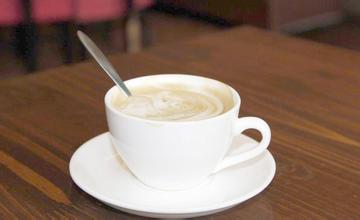Coffee bean origin coffee bean planting environment
Natural solarization
The process of this method is the simplest. The fruit begins the process of sun drying without treatment after picking. This is the oldest method of treatment in existence. This method is still used in places such as Ethiopia and Brazil. Natural solarization is most common in areas where water resources are scarce. The drying process usually lasts about 4 weeks. The method of handling must be very strict to ensure that the coffee does not lose any flavor. The natural sun method requires the local climate to be extremely dry. In some areas, people use dryers to assist in the drying process of coffee fruit (the hot air of the dryer can speed up the drying process and help people control the degree of drying).
Natural sunlight can retain the fruity aroma of coffee fruit. When you taste this kind of coffee, you will find that the coffee has a fruity aroma and a brighter taste. After drying, people will use special machines to remove the shell of the surface layer. This process is called drying and shelling (Dry Milling).
What are the treatment methods of raw coffee beans?
Washing method
In the process of washing, the peel and pulp of the fruit are treated with a special desizing machine and the coffee beans are peeled off. The coffee beans then enter the fermentation tank for fermentation treatment so that the mucous membrane is no longer sticky. The sugars in the mucous membrane are decomposed during fermentation. Depending on the fermentation method, the fermentation time is usually 12 hours to 6 days (some growers use the watering system to ferment coffee beans. This method is called the Kenyan washing method (Kenyan method) and usually lasts for several days). It is extremely important to decide when to stop fermentation. Once the coffee is overfermented, the taste of the coffee will become too sour. Once the sticky material in the mucous membrane is decomposed, it will be washed down with a lot of water. (the waste water from the raw bean treatment process is considered to be the source of pollution in the coffee industry. Today, advanced technologies are being developed in many areas to recycle and filter the waste water produced by this process. Water shampoo was born in the 19th century, also known as "wet processing".
A tightly controlled fermentation process increases the acidity of the coffee and is reflected in the final taste of the coffee. But as long as the coffee is washed immediately after the fermentation process, the taste of the coffee can be improved and has a bright sour taste.
What are the treatment methods of raw coffee beans?
three
Natural washing method
This method is extremely common in Brazil. The natural washing method is very similar to the water washing method, except that the natural washing method uses a high-pressure washing machine to remove the mucous membrane of the coffee surface, thus skipping the fermentation process. Several raw coffee processing companies in Brazil and Colombia have patented this method and have become local natural water system processing monopolies. The amount of water used in this method is much lower than that of washing hair, so some people are used to calling it "semi-drying (Semi-Dry)". Because there is no fermentation, coffee beans do not exist (or only have a very low risk of fermentation), and the overall quality of coffee is more constant. Unfortunately, the taste of coffee tends to be flat because it is not fermented. As a result, growers will not use natural washing for ultra-high quality coffee beans. Most raw bean purchasing companies also seldom buy coffee processed by natural washing.

Important Notice :
前街咖啡 FrontStreet Coffee has moved to new addredd:
FrontStreet Coffee Address: 315,Donghua East Road,GuangZhou
Tel:020 38364473
- Prev

Papua New Guinea Coffee roasting degree Papua New Guinea Origin
The coffee industry plays an important role in the country's economy. More than 1 million people are directly and indirectly engaged in the industry. The government encourages planting by offering a minimum purchase price. The industry itself is controlled by the Coffee Industry Council (CoffeeIndustryBoard). The commission is located in Goroka, in the eastern part of the island, while exports are handled by private companies. The destruction of frost in 1975
- Next

Coffee Culture course Coffee Development Origin Coffee handling
Coffee culture Coffee, as a representative of fashion and delicacy, has been favored by countless beauties. However, drinking coffee without paying attention to time will cause harm to the body of coffee beauties. Coffee contains caffeine, which excites the sympathetic nerves after entering the body, thus eliminating drowsiness, improving blood circulation, and the body also feels warm and does not feel tired, so it has a refreshing effect.
Related
- Does Rose Summer choose Blue, Green or Red? Detailed explanation of Rose Summer Coffee plots and Classification in Panamanian Jade Manor
- What is the difference between the origin, producing area, processing plant, cooperative and manor of coffee beans?
- How fine does the espresso powder fit? how to grind the espresso?
- Sca coffee roasting degree color card coffee roasting degree 8 roasting color values what do you mean?
- The practice of lattes: how to make lattes at home
- Introduction to Indonesian Fine Coffee beans-- Java Coffee producing area of Indonesian Arabica Coffee
- How much will the flavor of light and medium roasted rose summer be expressed? What baking level is rose summer suitable for?
- Introduction to the characteristics of washing, sun-drying or wet-planing coffee commonly used in Mantenin, Indonesia
- Price characteristics of Arabica Coffee Bean Starbucks introduction to Manning Coffee Bean Taste producing area Variety Manor
- What is the authentic Yega flavor? What are the flavor characteristics of the really excellent Yejasuffi coffee beans?

